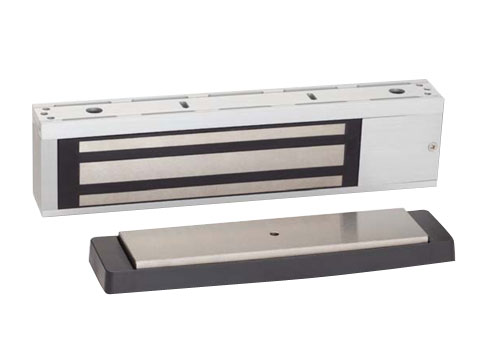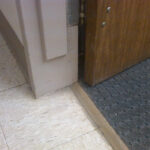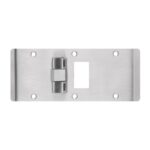I’m at the NFPA School Safety Summit this week and it has been an amazing opportunity to hear from code officials, first responders, and other experts, and to break into smaller groups to discuss school safety issues and the necessary code changes. I’ll definitely have more to report on this later. 
Last night I met Ron Coté from NFPA (one of the authors of the NFPA 101 Handbook), and it reminded me to share something with you. I still get a lot of questions about which code sections apply to electromagnetic locks, and when to use each. There are two sections addressing mag-locks in both the International Building Code (IBC) and NFPA 101 – The Life Safety Code. One section applies to mag-locks released by door-mounted hardware (like a request-to-exit switch in a panic device) and the other section addresses mag-locks released by a motion sensor and push button.
I recently saw an article written by Ron Coté, where he clearly and concisely described the two code sections and which applications they apply to. It was published in NFPA Journal®, and with NFPA’s permission here are Ron’s descriptions:
- Electrically controlled egress door assemblies. The door is held in its locked position by an electromagnet. Entry from the exterior, if it is to be permitted, is typically gained by a card reader. The door can be opened from the interior via a lock/latch release, installed on the door leaf, that directly removes power from the electromagnet. The occupant sees the unlocking process as being no different than that performed for a mechanically released latch, but the locking and unlocking mechanisms are electronic. [LG: In the IBC, the applicable section is called Electromagnetically Locked Egress Doors.]
- Access-controlled egress door assemblies. The door is held in its locked position by an electromagnet. Entry from the exterior, if it is to be permitted, is typically gained by a card reader. The door can be opened from the interior by pushing on the door leaf as a motion detector senses an approaching occupant and electrically unlocks the door. Should the unlocking mechanism fail, a PUSH TO EXIT button, located to the side of the door opening, overrides the lock so as to provide a redundant unlocking means. Additional required building system and hardware features work together to assure that the access-controlled egress door assembly does not compromise life safety. [LG: In the 2015 edition of the IBC, the title of the applicable section has been changed to Sensor Release of Electrically Locked Egress Doors.]
Last year I had an AHJ state that BOTH sections had to be followed for the same door because it had both a mag-lock and a card reader. If you read the two sections, it’s obvious that both sections can’t apply to the same door – the sections address two different applications. When the 2015 IBC Commentary becomes available, it should include some new information which will further explain the various code sections that apply to doors with electrified hardware. But until then, I hope Ron’s descriptions will back me up and help to clear up the confusion that surrounds these sections.
For more information about doors with electrified hardware, refer to this article that was published in Construction Specifier.
Reprinted with permission from NFPA Journal ® (Vol. 108, #5) copyright © 2014, National Fire Protection Association, Quincy, MA. All rights reserved.
NFPA Journal ® is a registered trademark of the National Fire Protection Association, Quincy, MA 02169.
You need to login or register to bookmark/favorite this content.






Leave A Comment